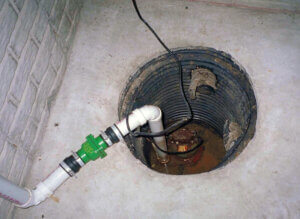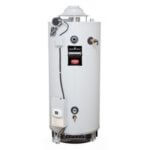How To Replace a Sump Pump
Replacing a sump pump is a vital task that ensures your basement stays dry and prevents potential water damage. Whether you’re facing an old pump failure or looking to upgrade, understanding how to replace a sump pump can save you time, money, and hassle. This comprehensive guide will walk you through the process of sump pump replacement, including how to identify a faulty pump, choosing the right replacement, and the tools you need to perform the task.
Identifying the Need for Replacement

Knowing when to replace a sump pump is crucial. Here are several indicators that suggest it’s time for a sump pump replacement:
- Unusual noises: Loud or strange noises can indicate motor or impeller issues.
- Frequent cycling: If the pump turns on and off more frequently than usual, it could signal a float switch problem.
- Visible rust: Rust or corrosion can impede the pump’s function and may lead to water contamination.
- Age of the pump: Sump pumps typically last about 7-10 years. If yours is older, consider a replacement.
- Power issues: If the pump frequently loses power or trips breakers, it might be time for a new one.
Regular maintenance checks can help identify these issues early, preventing unexpected failures. When these signs persist, replacing the sump pump is necessary to avoid potential basement flooding.
Choosing the Right Sump Pump
Selecting the appropriate replacement sump pump involves several considerations:
- Pump type: Submersible pumps are installed underwater and are more powerful, making them suitable for areas with higher water tables. Pedestal pumps sit above the water level and are easier to maintain, making them a more economical choice.
- Horsepower: Choose a pump with sufficient horsepower to handle the volume of water in your basement. A standard home may require a pump with 1/3 to 1/2 horsepower.
- Capacity: Consider the pump’s gallons per hour rating at your basement’s lift distance. A higher GPH ensures efficient water removal.
- Float switch type: A vertical float switch is suitable for small sump pits, while a tethered float switch works well in larger pits with more space.
For more detailed guidance, you can reach out to our technical experts at Allied Plumbing and Heating Supply.
Detailed Guide to Replacing a Sump Pump
Now, let’s talk about the tools you need and steps required to replace your faulty or old sump pump.
Tools and Materials Needed
Before starting, gather tools and materials:
- Replacement sump pump (submersible or pedestal)
- Screwdrivers
- Pipe wrench
- PVC pipe and fittings
- Check valve
- Teflon tape
- Bucket
- Towels
Removing the Old Pump: Step-By-Step Instructions
Here are steps to follow when removing the old pump.
Disconnect Power
The first step is to unplug the old sump pump from the power source to ensure safety. This step is crucial to prevent electrical shocks while working in a potentially wet environment. Double-check that the power is completely off before proceeding to the next steps.
Detach Discharge Pipe
Use a pipe wrench to loosen and remove the discharge pipe from the old pump. Be prepared for some water to spill out when disconnecting the pipe. It’s a good idea to have towels or a bucket nearby to catch any residual water and keep your work area dry.
Remove the Pump
Carefully lift the old pump out of the sump pit. Depending on the type and age of the pump, it might be heavy or awkward to handle. Place the old pump in a bucket or on a towel to avoid making a mess.
Clean the Pit
Remove debris and clean the sump pit thoroughly to prepare for the new pump installation. A clean pit helps ensure that the new pump operates efficiently and reduces the risk of clogs or malfunctions. Use a wet/dry vacuum or a sponge to remove any standing water, and scrub the pit walls if necessary.
Installing the New Pump: Comprehensive Steps
Follow these steps when installing the new pump to ensure optimal performance.
Prepare the New Pump
Attach the new check valve to the discharge pipe using Teflon tape to ensure a tight seal. The check valve prevents water from flowing back into the sump pit, which is essential for the proper operation of your new pump. Ensure the valve is installed in the correct orientation, with the arrow pointing away from the pump.
Position the Pump
Place the new pump into the sump pit, ensuring it sits level and stable. A stable placement prevents the pump from tipping over or shifting during operation, which can lead to inefficiencies or damage. Take the time to position the pump correctly, especially if the pit has an uneven bottom.
Connect the Discharge Pipe
Securely attach the discharge pipe to the new pump, making sure all connections are tight to prevent leaks. Use the pipe wrench to tighten the fittings, but be careful not to overtighten, as this can damage the threads or the pump housing. Test the connection by gently tugging on the pipe to ensure it’s secure.
Final Installation Steps
After installing the new sump pump, take these steps to ensure everything is in order.
Test the Pump
Plug in the new pump and pour water into the sump pit to test its operation. Ensure the float switch moves freely and activates the pump. Observe the pump as it runs through a full cycle to confirm that it starts and stops correctly. If the pump does not operate as expected, check the power connection and the float switch for any issues.
Secure the Area
Ensure all cords and pipes are secured and not obstructing the float switch or impeller. Loose cords or pipes can interfere with the pump’s operation, leading to potential failures. Use cable ties or clamps to keep everything neatly in place and out of the pump’s way.
Monitor Performance
Regularly check the pump’s performance during the first few cycles to confirm everything is functioning properly. Listen for any unusual noises or vibrations, which can indicate a problem. It’s also a good idea to check the area around the pump for any signs of leaks or water accumulation.
Shop Sump Pumps in Chicago
Replacing a sump pump may seem daunting, but with the right tools and guidance, it can be a manageable DIY project. At Allied Plumbing and Heating Supply, we offer a wide selection of high-quality sump pumps and components to meet your needs. Contact us today for reliable products and expert advice to keep your home safe and dry.
Sump pump by State Farm is licensed with Attribution 2.0 Generic



